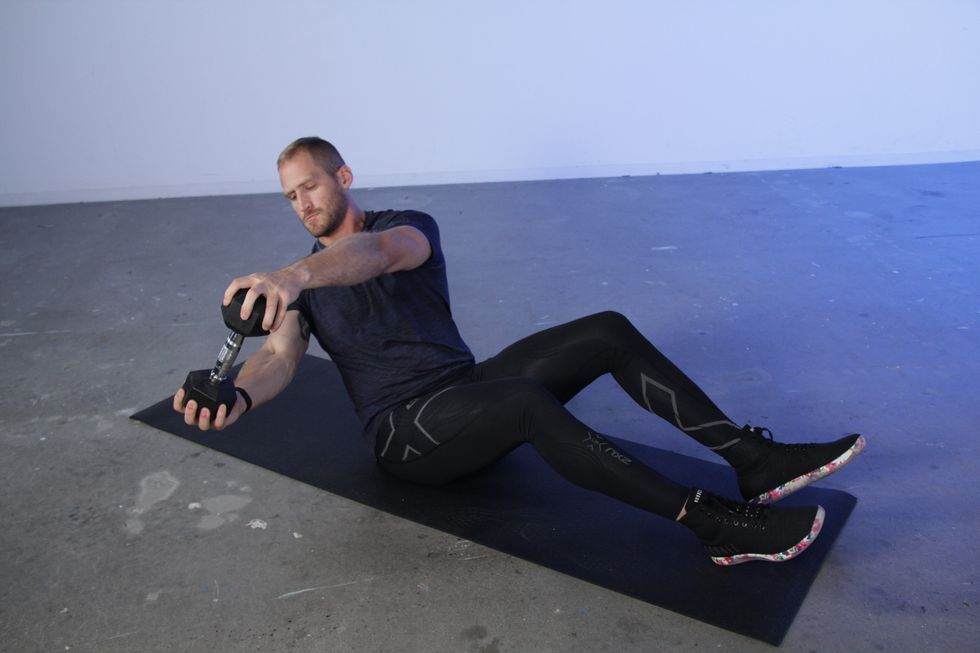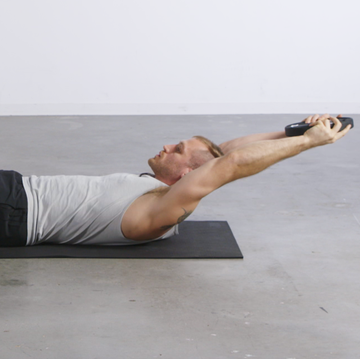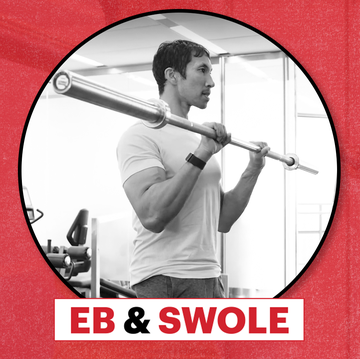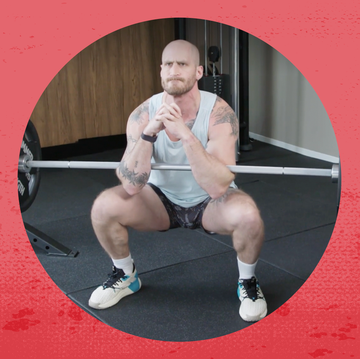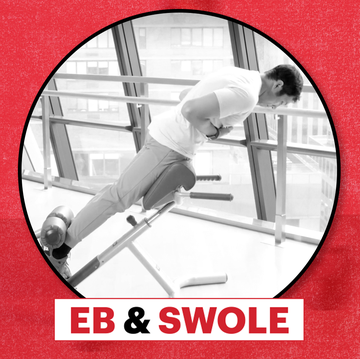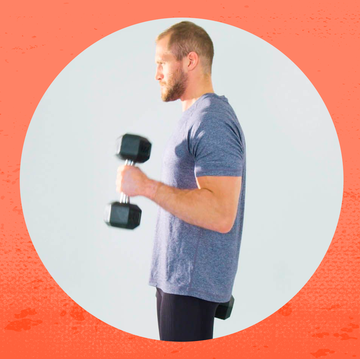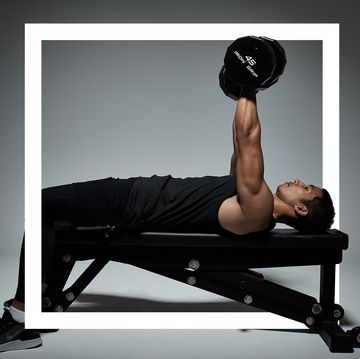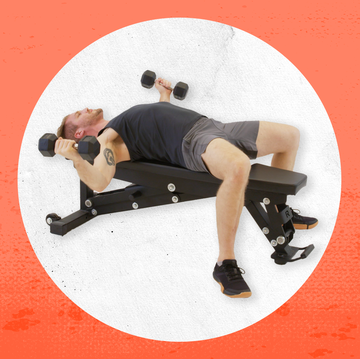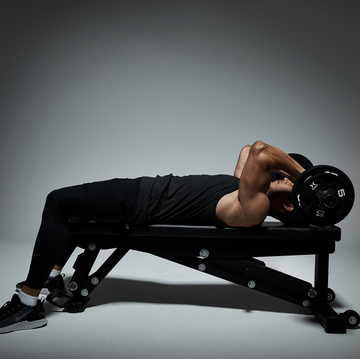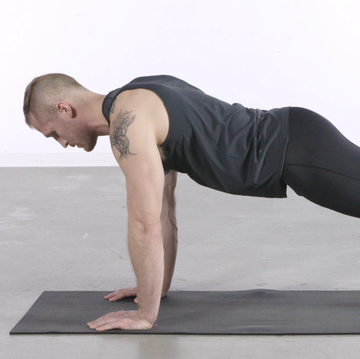Once you go beyond the absolute basics of ab-training exercises—situps and planks, of course—what comes next? For most guys, the go-to move will most likely be grabbing a med ball or weight plate, plopping their butt down on a mat, and rotating their trunk back and forth, touching the load down onto the floor on each side of their body, for rep upon rep. The exercise is called the Russian twist, and it's a common gym staple.
It's also a bad idea for you to include in your workouts if you don't know what you're doing. Here, Men's Health fitness director Ebenezer Samuel, C.S.C.S. and fitness editor Brett Williams, NASM-CPT break down what you need to know to do the Russian twist more safely.
Benefits (and Risks) of the Russian Twist
People like Russian twists because they take advantage of your core's ability to rotate your torso, one of its four key functions. This movement targets your obliques, the long muscles that run along the sides of your torso and help to flex, laterally bend, and rotate the spine. If you want a strong, symmetrical core, your obliques need focused attention.
The main issue with the way that most people do the Russian twist is that they rush. This is a common problem with plenty of ab exercises, but it's a particularly bad idea when you're rotating your trunk with a load, which will increase the likelihood of injury. Samuel says that doing the movement properly takes perfect form, but there are so many spots where you can cheat, so it's likely a bad choice for most exercisers.
But if you're determined to make the Russian twist work for you, there are important form cues to be followed.
How to Do the Russian Twist Safely
Follow these form cues to learn how to do the Russian twist more safely. Once you've read the step-by-step directions, follow along for some higher-level tips from Samuel to dive deeper into the exercise.
●Sit down on the floor or on a mat, keeping your feet on the ground. Your heels should stay on the floor, but your toes can be off the ground. Squeeze your glutes for stability.
●Lean back, forming a right angle from your torso relative to your thigh.
●Raise your arms out in front of you. Look up at your hands (and the weight, once you progress to working with a load)—you'll keep your gaze trained there throughout the movement.
●Rotate your torso from one side to the other, pausing for a beat in the middle position between each rep. Move slowly, and keep your eyes on the weight. Keep the load out as far as possible to keep the lever long to challenge your abs. Only work within you range of motion; once your hips and knees begin to shift, you've gone too far.
●Work for time or reps.
Keep Your Torso Long
Eb says: Make sure your back isn't rounding forward to start the Russian twist. Instead, get as long as you can. Think about raising your entire torso from your waist, then extending your torso long. This will protect your spine from injury while still letting your obliques reap the benefits from the Russian twist.
Feet Down
Eb says: Yes you can do the Russian twist with your feet floated in the air, but start with your feet flat on the ground and master that. Too many people start floating their feet in the air too early on, because they're told that it levels up the move. Sure it does—if and only if you're going to battle to keep your legs steady and not let them flit back and forth.
Keeping your feet on the ground offers you more feedback to learn that battling process. So start here, and know that there can be plenty of challenge from this position alone.
Long Levers
Eb says: Whether you're using a load or not, reach your arms out as far as possible. The longer a lever you create, the more your core will have to work to rotate. And you want your core to work, don't you?
Creating this long lever will also help you protect your lower back. You'll instantly have to load less, but you'll get more benefit from that lighter load. And your core has to brace from the start to manage that longer lever, instead of winding up in a relaxed position.
Eyes On the Prize
Eb says: One of the most common problems with the Russian twist: People do half-hearted rotations. They don't rotate their shoulders all the way over, instead just moving their hands, and thus completely missing the full benefit of the ab work they could be getting.
To get the most out of the Russian twist, your shoulders must go along with the ride, rotating as far in each direction as possible. Following your hands will help create that rotation. If you look straight ahead, it's easy to fail to rotate. By following your hands, your upper body will rotate more too.
Want to master even more moves? Check out our entire Form Check series.

